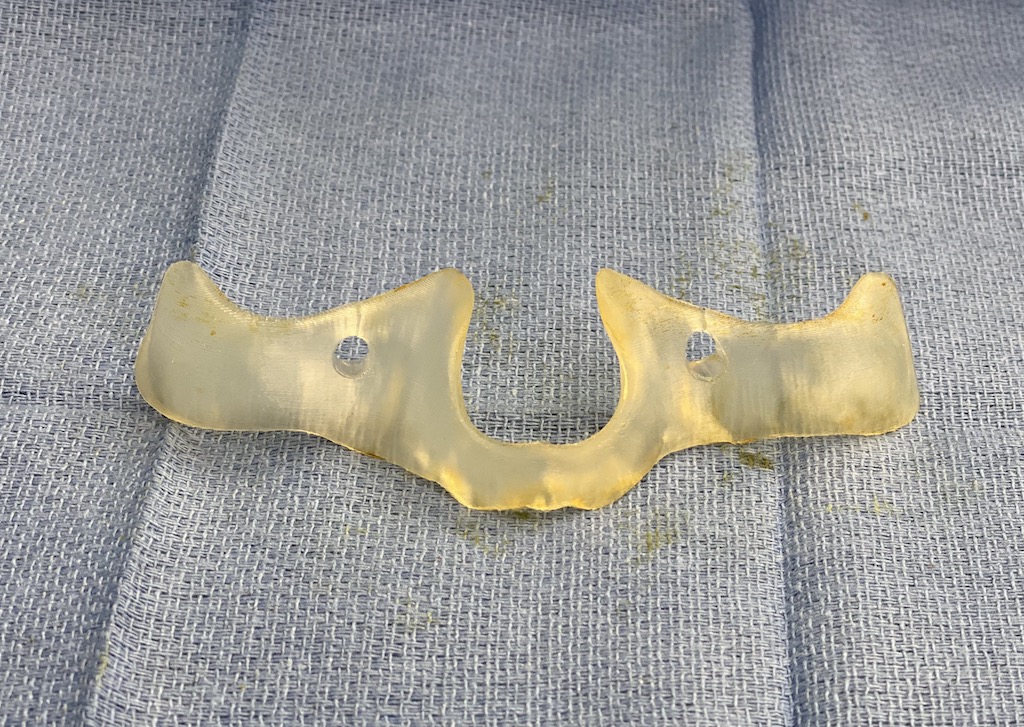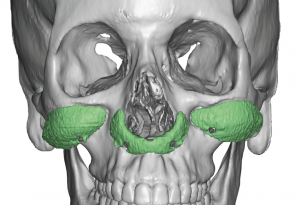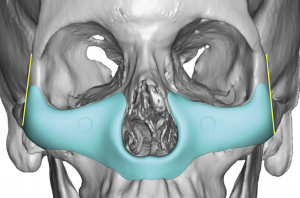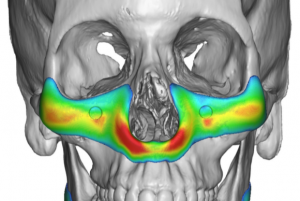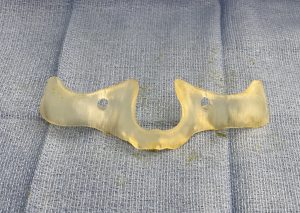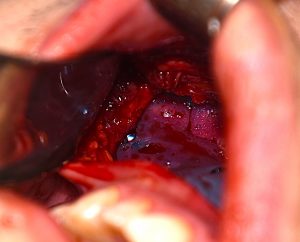Augmentation of the midface is a variable term and concept. This could mean a wide range of augmenting the convexities and concavities that make up the central third of the face. Traditionally midface augmentation meant cheek implants. And although there are various styles of cheek implants this means increasing the convexity of the zygomatic major bone only. (aka cheekbone) Other now commonly augmented midface areas are the infraorbital rims with tear trough implants and the base of the nose (pyriform aperture) with premaxillary and paranasal implants.
When midface augmentation is requested today it is often implies a more comprehensive approach employing multiple types of midface implants put together. While this does provide a more comprehensive midface augmentation than either one alone it still represents ‘spot’ augmentation rather than impacting the entire midface bone surface.
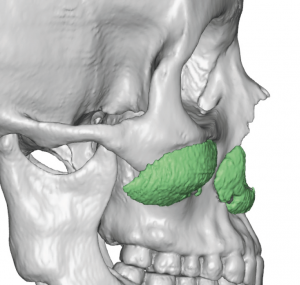


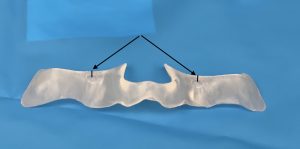
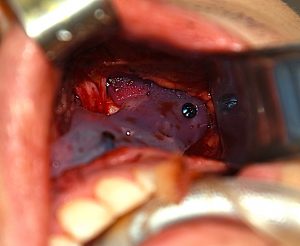
Augmenting the complete bony surface of the midface creates the most complete method of midface augmentation. It most closely represents what the natural bone shape would look like if it had developed with more projection with the exception of the lower end dentoalveolar structures. It is akin to what a LeFort III advancement osteotomy would create if one did not need any occlusal change.
Dr. Barry Eppley
Indianapolis, Indianapolis

